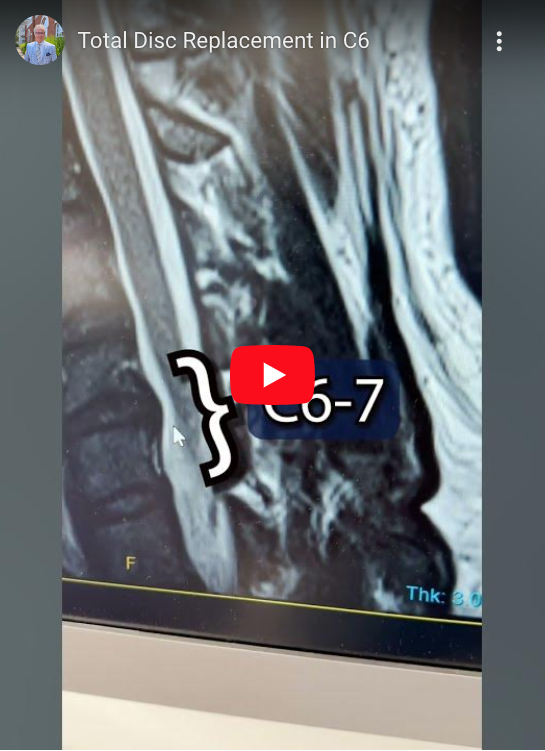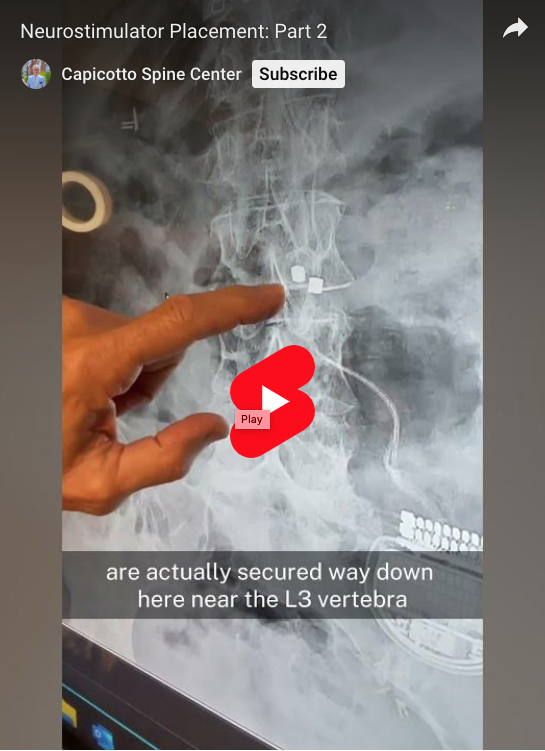
What is a Lumbar Laminectomy?
A Laminectomy is the surgical removal of part of the vertebral bone called the lamina to help reduce pain or discomfort to the nerve roots within your spinal column. The spinal column consists of 24 vertebrae and each vertebrae has two lamina that fuse together to form the roof of the spinal canal. The lamina helps to protect the spinal cord throughout your neck and back.
In the lower back where your spinal cord ends, the lamina helps shield the large bundle of nerve roots called the cauda equina, as well as the nerve roots exiting the spine. A laminectomy can be done on a vertebrae in the lower back called the lumbar vertebrae or in the neck region called the cervical vertebrae. Nerve root compression can be caused by a variety of conditions including bone spurs from arthritis, a herniated disk compressing the nerve root, or on rare occasions, a bone tumor of the vertebra. A lumbar laminectomy is specifically performed on lamina in the lower back to relieve back and leg pain caused by this nerve root compression by removing all or part of the lamina.
What to expect the day of your surgery
Remember: each case is different so every patient’s procedure is tailored to fit their specific needs. The outline below is a generalization of what you can expect the day of your lumbar laminectomy:
Pre-Surgery
When it comes time to prep you for your procedure, an IV line will be started and a catheter may be placed. A general anesthetic will be administered to put you to sleep. You will be placed on your stomach for the duration of the surgery which, typically, can last 1 to 3 hours.
The Lumbar Laminectomy Procedure
Your surgeon will begin by making an incision near the affected spinal area. Once the incision has been made, a retractor is then used to move your skin, fat, and muscles to the side so your surgeon can easily access the inner workings of your spine. Using a specially designed bone drill your surgeon will gently cut away the lamina in order to see into the spinal canal and locate the source of your nerve compression. If a herniated disk is causing you spinal compression your surgeon may need to perform a discectomy by safely removing the protruding part of your disk. After the procedure has been completed and the underlying issues have been addressed the deep tissues and incision in your back will be closed with stitches.
Post-op
Like with any surgery involving anesthesia, afterwards you will be taken to a recovery room to be monitored. The nursing staff will regularly monitor your vital signs and check the strength of the leg on the side of your surgery to ensure that there were no complications. Before leaving the hospital or ambulatory surgery center, you will be encouraged to get up and walk as soon as you feel comfortable. With advancements in surgical procedures some patients will benefit from minimally invasive laminectomy procedures that help reduce post-op and general recovery times, often allowing patients to go home the same day.
Choose A Spine Surgeon You Can Trust
Any surgery can be a cause for worry, but here at the offices of William Capicotto MD we are trying to take the fear of the unknown out of your surgical procedure. If you have questions or concerns about any of the procedures or remedies we offer, we highly encourage you to talk with your doctor directly to address any of your worries and alleviate any apprehensions you may have. To schedule a consultation call our office today at (716) 881-0382.



